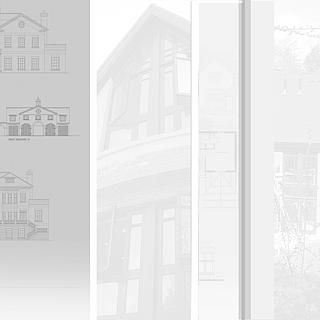Discover Virtual Reality Design in Architecture
- Glenn Cavill
- Oct 20
- 4 min read
When I first encountered immersive architectural visualization, I was amazed at how it transformed the way architects and clients experience building designs. Instead of relying solely on blueprints or 3D models on a screen, this technology allows you to step inside a virtual space and explore it as if it were already built. This hands-on approach brings clarity, excitement, and precision to architectural projects.
In this post, I want to share what I’ve learned about immersive architectural visualization, how it works, and why it’s becoming an essential tool in modern architecture. Whether you’re an architect, designer, or simply curious about the future of building design, this guide will help you understand the benefits and practical uses of this innovative technology.
What Is Immersive Architectural Visualization?
Immersive architectural visualization is a method that uses virtual reality (VR) to create a realistic, interactive 3D environment of a building or space. Instead of viewing a flat image or a static 3D model, you wear a VR headset and find yourself inside the design. You can walk around, look up and down, and get a true sense of scale and space.
This technology bridges the gap between imagination and reality. It helps architects communicate their ideas more effectively and allows clients to make informed decisions before construction begins. You can spot design flaws, test different materials, and even experiment with lighting conditions in real time.
Key Features of Immersive Architectural Visualization
Realistic spatial experience: Feel the size and flow of rooms.
Interactive elements: Open doors, change furniture, or switch wall colours.
Accurate lighting simulation: See how natural and artificial light affect the space.
Collaborative environment: Multiple users can explore the design together remotely.

How Immersive Architectural Visualization Enhances Design
One of the biggest challenges in architecture is conveying the final look and feel of a project before it’s built. Traditional drawings and 3D renders can only go so far. Immersive architectural visualization changes this by offering a fully navigable experience.
For example, when designing a new office space, you can walk through the virtual environment and assess how natural light enters the room at different times of day. You might notice that a window placement causes glare on computer screens or that a corridor feels too narrow. These insights allow you to make adjustments early, saving time and money.
Moreover, this technology supports better client engagement. Instead of trying to interpret technical drawings, clients can explore the design themselves. This reduces misunderstandings and builds confidence in the project.
Practical Tips for Using Immersive Visualization in Your Projects
Start early: Integrate VR into the design process from the initial concept stage.
Use it for presentations: Impress clients with a virtual walkthrough.
Test materials and finishes: Swap textures and colours to find the best combinations.
Collaborate remotely: Share the VR experience with stakeholders anywhere in the world.

The Technology Behind Immersive Architectural Visualization
Creating an immersive architectural experience involves several technologies working together. Here’s a simple breakdown:
3D Modelling Software: Architects use tools like Revit, SketchUp, or Rhino to build detailed digital models.
Game Engines: Platforms such as Unreal Engine or Unity convert these models into interactive environments.
VR Hardware: Headsets like Oculus Quest, HTC Vive, or Valve Index allow users to enter the virtual space.
Input Devices: Controllers or hand tracking enable interaction with the environment.
The process starts with a detailed 3D model of the building. This model is then imported into a game engine, where lighting, textures, and physics are added. Finally, the VR hardware renders the scene in real time, responding to the user’s movements and actions.
This combination of software and hardware creates a seamless, immersive experience that feels natural and intuitive.
Exploring Virtual Reality Design in Architecture
If you want to dive deeper into the world of virtual reality design, you’ll find it’s a rapidly evolving field with exciting possibilities. Architects are using VR not just for visualisation but also for design collaboration, client presentations, and even construction planning.
For instance, VR can simulate construction sequences, helping teams identify potential issues before they happen on site. It also supports accessibility testing by allowing designers to experience spaces from different perspectives, including those with mobility challenges.
By embracing virtual reality design, you open the door to more creative, efficient, and user-friendly architecture.

Bringing Your Designs to Life with Immersive Visualization
Immersive architectural visualization is more than just a flashy tool. It’s a practical solution that improves communication, reduces errors, and enhances creativity. By stepping into your designs, you gain a new perspective that’s impossible to achieve through traditional methods.
If you’re considering adopting this technology, start small. Experiment with simple VR walkthroughs and gradually incorporate more interactive features. Partner with experienced VR developers or explore user-friendly platforms that don’t require advanced technical skills.
Remember, the goal is to make your designs clearer and more engaging for everyone involved. With immersive architectural visualization, you can bring your ideas to life in a way that truly resonates.
I hope this introduction to immersive architectural visualization inspires you to explore the possibilities of virtual reality in your own projects. The future of architecture is immersive, interactive, and incredibly exciting. Why not take the first step today?








Comments